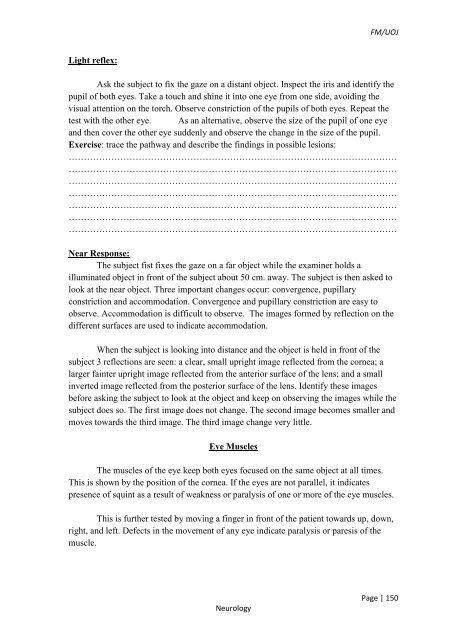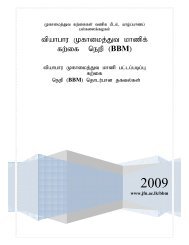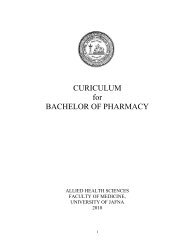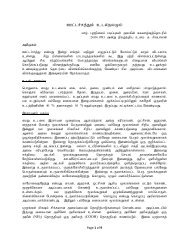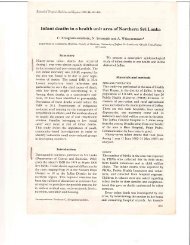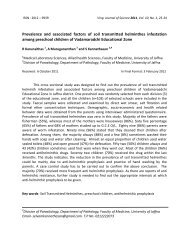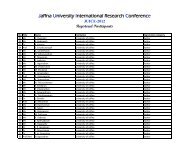MANUAL PHYSIOLOGY PRACTICAL - Repository:The Medical ...
MANUAL PHYSIOLOGY PRACTICAL - Repository:The Medical ...
MANUAL PHYSIOLOGY PRACTICAL - Repository:The Medical ...
Create successful ePaper yourself
Turn your PDF publications into a flip-book with our unique Google optimized e-Paper software.
FM/UOJ<br />
Light reflex:<br />
Ask the subject to fix the gaze on a distant object. Inspect the iris and identify the<br />
pupil of both eyes. Take a touch and shine it into one eye from one side, avoiding the<br />
visual attention on the torch. Observe constriction of the pupils of both eyes. Repeat the<br />
test with the other eye. As an alternative, observe the size of the pupil of one eye<br />
and then cover the other eye suddenly and observe the change in the size of the pupil.<br />
Exercise: trace the pathway and describe the findings in possible lesions:<br />
………………………………………………………………………………………………<br />
………………………………………………………………………………………………<br />
………………………………………………………………………………………………<br />
………………………………………………………………………………………………<br />
………………………………………………………………………………………………<br />
………………………………………………………………………………………………<br />
………………………………………………………………………………………………<br />
Near Response:<br />
<strong>The</strong> subject fist fixes the gaze on a far object while the examiner holds a<br />
illuminated object in front of the subject about 50 cm. away. <strong>The</strong> subject is then asked to<br />
look at the near object. Three important changes occur: convergence, pupillary<br />
constriction and accommodation. Convergence and pupillary constriction are easy to<br />
observe. Accommodation is difficult to observe. <strong>The</strong> images formed by reflection on the<br />
different surfaces are used to indicate accommodation.<br />
When the subject is looking into distance and the object is held in front of the<br />
subject 3 reflections are seen: a clear, small upright image reflected from the cornea; a<br />
larger fainter upright image reflected from the anterior surface of the lens; and a small<br />
inverted image reflected from the posterior surface of the lens. Identify these images<br />
before asking the subject to look at the object and keep on observing the images while the<br />
subject does so. <strong>The</strong> first image does not change. <strong>The</strong> second image becomes smaller and<br />
moves towards the third image. <strong>The</strong> third image change very little.<br />
Eye Muscles<br />
<strong>The</strong> muscles of the eye keep both eyes focused on the same object at all times.<br />
This is shown by the position of the cornea. If the eyes are not parallel, it indicates<br />
presence of squint as a result of weakness or paralysis of one or more of the eye muscles.<br />
This is further tested by moving a finger in front of the patient towards up, down,<br />
right, and left. Defects in the movement of any eye indicate paralysis or paresis of the<br />
muscle.<br />
Neurology<br />
Page | 150


